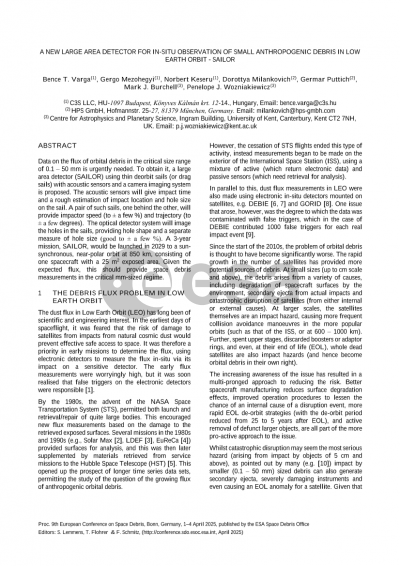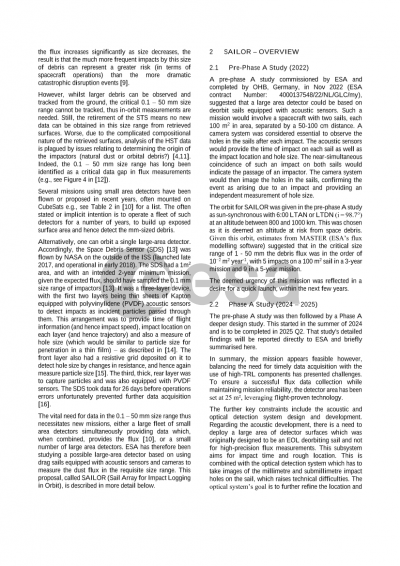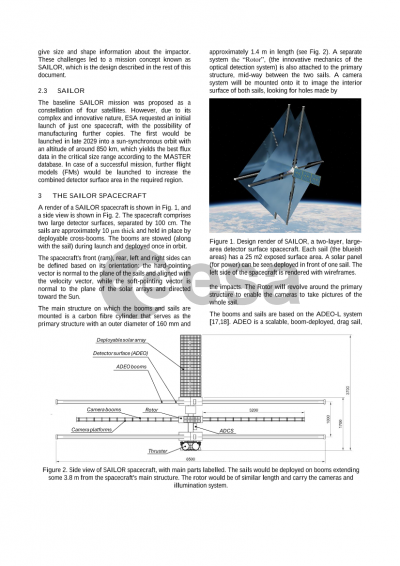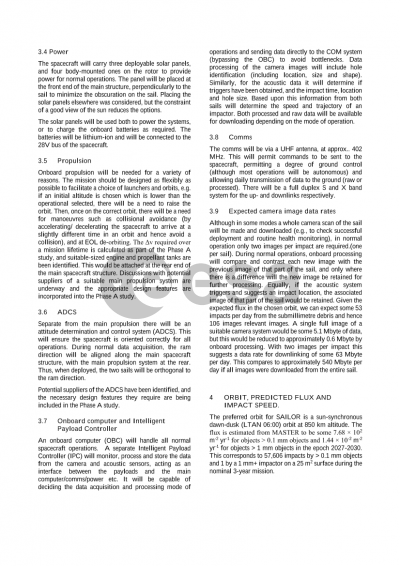Document details

Abstract
Due to the increasing number of rocket launches and satellites deployed in LEO, space debris from anthropogenic objects poses an increasing threat to all types of spacecraft. This paper focuses on a proposal to measure the dust flux in LEO at the critical size range 0.1 – 50 mm in real-time and in-situ. This is a large enough size to pose risks to spacecrafts and the flux is both currently poorly constrained and is predicted to be growing. The detectors would be placed on a constellation of dedicated satellites called SAILOR. The spacecraft would use as many high TRL components as possible to reduce cost and mission development time.
According to predictions from the ESA MASTER database, the peak of the millimetre-sized space debris flux occurs between altitudes of 700 and 900 km. However, this prediction is mainly from model-based estimates and old data, rather than recent measurements, thus these figures need to be validated. The mission focuses on the acquisition of the velocity vectors of small, millimetre and submillimetre particles, which will be subsequently used for calculating the particle flux on the orbit. These are sufficiently hazardous in themselves to cause serious damage in an impact and can help to more accurately predict the flux of larger, even more dangerous cm-sized ones which can trigger catastrophic disruption events.
The architecture of the mission is planned as follows: two large impact foils - called Sails, with an effective area of 25 m2 – would be placed on each satellite. Detection of a pair of hits coincident in time on both sails permits tracking of a particle and extracting the velocity vector and energy as well. To detect the impact signals of the incoming particles, numerous acoustic PVDF sensors will be installed on the surface of each sail. The impact location and hole size can be further refined using the optical payload subsystem, which contains space-qualified cameras and illumination. These are fixed onto a COTS or slightly modified boom system mounted on a rotating hub between the two sails. This allows the cameras to move to the impact position. Recent tests have shown that the cameras can achieve a resolution of 50 microns at a stand-off distance of 65 centimetres, demonstrating the ability to detect even sub-millimetre particles. Flying with four SAILOR satellites, there should be of order 1 to 2 impacts per year in the 1 – 50 mm size range, and between 0.1 mm and 1 mm, the estimation is in the order of 60000 impacts per year.
Overall, the SAILOR proposal is a first step towards a direct and low-cost solution for future in-situ, real-time particle flux measurements. If the demonstration mission is successful, the architecture has the potential to be replicated and miniaturised into an integrated product that could be installed on any satellite providing an on-going supply of particle flux data in a variety of orbits, allowing monitoring of the flux over time.
Preview









